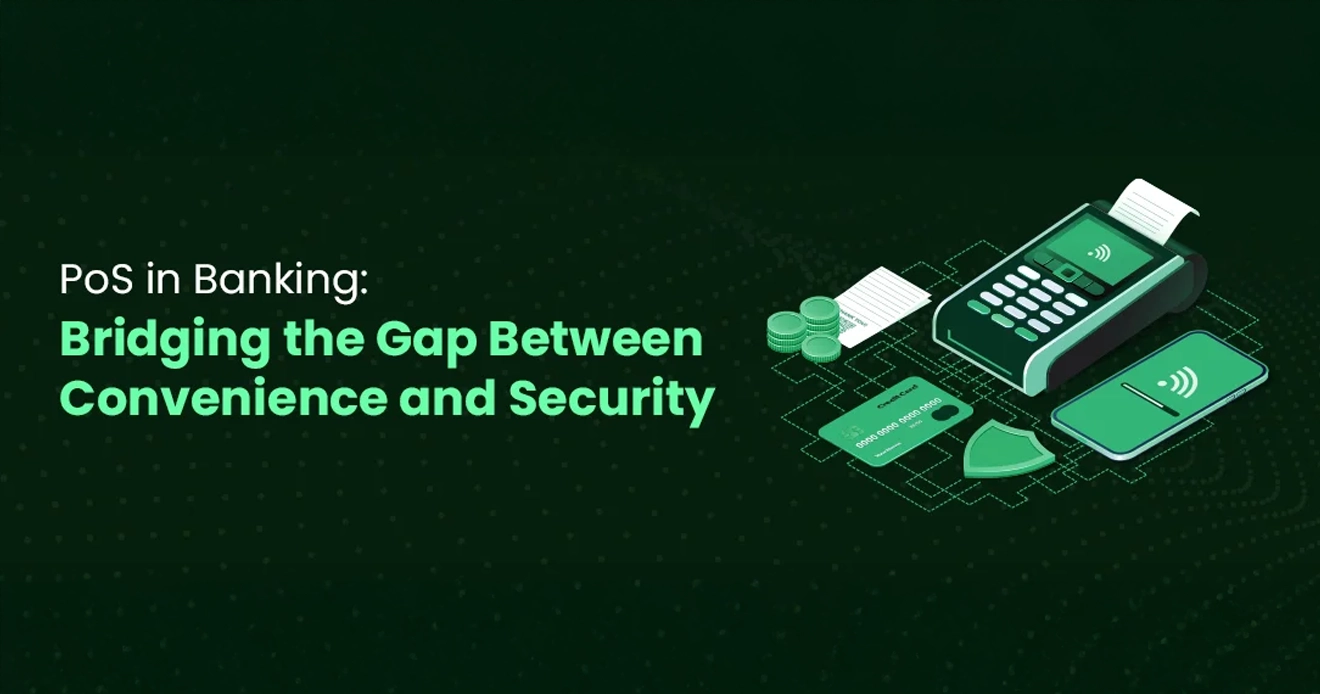The banking sector has undergone a tremendous transformation in recent years. From lengthy queues and piles of paperwork, banks have now adopted modern technologies like Point-of-Sale (PoS) machines to provide customers with convenient and quick banking services.
However, with convenience comes the risk of security threats. While PoS machines have become ubiquitous, banks must regularly upgrade security features to prevent fraud and data breaches. An ideal PoS machine in banking aims to strike the perfect balance between convenience and security.
What does PoS mean in banking?
PoS or Point-of-Sale refers to the system that allows customers to make card payments to merchants. When customers make a debit/credit card payment at a store, restaurant or ecommerce website, they are essentially using a Point-of-Sale machine.
In banking, PoS machines facilitate cashless payments by enabling card-based transactions. The card is physically swiped or inserted into the PoS machine. Alternatively, contactless cards can also make payments simply by tapping the card near the machine.
Benefits of PoS to bank
Point-of-Sale machines provide the following key benefits to banks:
- Increase in cashless transactions: PoS machines promote debit/credit card usage, enabling banks to handle a higher volume of cashless payments. This aligns with the government’s Digital India initiative.
- Faster processing: Electronic payments via PoS enable real-time transaction processing and settlement compared to traditional mechanisms like cheques.
- Enhanced security: PoS machines are EMV chip and PIN enabled, providing enhanced security compared to magnetic strip cards.
- New revenue source: Banks earn revenues in the form of merchant discount rates, rental charges and transaction fees from PoS deployment.
- Customer data: PoS generates detailed reports on customer spending patterns across merchant outlets. Banks can leverage this for cross-selling.
- Operational efficiency: PoS machines reduce cash handling costs and infra, which are required to manage cash-based payments for banks.
- Competitive advantage: Innovative PoS products like contactless payments distinguish a bank’s offerings in the market.
By driving digital payments, Point-of-Sale systems generate higher revenues while reducing bank operational costs. Integrated analytics also provides consumer insights that aid strategic decision-making.
PoS charges and fees
Banks charge certain fees from merchants for enabling card-based payments via the Point-of-Sale machines. These charges generally include:
- Merchant Discount Rate (MDR): A percentage of the transaction amount banks charge from merchants per credit/debit card sale. This fee compensates banks for handling payments.
- Rental charges: Fixed monthly rental for the PoS machine, as well as charges for paper rolls, repair and maintenance.
- Transaction fees: Charges per transaction in addition to MDR. This includes fees for payment gateway costs, service tax, etc.
- Joining fees: A one-time fee for the new PoS machine installation and merchant onboarding is charged.
- Annual fees: Charges for renewal of the PoS machine at the end of the year.
The fee structure varies across banks, and merchants must carefully evaluate all charges before selecting a PoS machine provider. Banks also offer various PoS plans based on the monthly volume of transactions.
PoS in bank statement
Bank account statements reflect transactions made through PoS machines. The description of the merchant establishment would appear under the transaction narration.
For instance, a PoS transaction at a restaurant would display as ‘Indian Eatery’ or at a medical store as ‘Health First Pharmacy.’ Ecommerce websites would show the portal’s name like ‘ABC Online Shopping’.
Banks also have to adhere to RBI regulations that require displaying a minimum of four letters from the merchant’s name in transaction narrations. This helps customers identify and reconcile the PoS payments.
The transaction amount, date, narration and available balance are key details in the bank statement for PoS payments. Customers can cross-verify statement entries with physical receipts to detect suspicious or fraudulent transactions on their accounts.
Pine Labs banking partners
Pine Labs is one of the top PoS machine providers in India with an extensive presence across retail and hospitality sectors. Some of the major banks that have partnered with Pine Labs to supply PoS machines include:
- HDFC Bank
- ICICI Bank
- Axis Bank
- Kotak Mahindra Bank
- IndusInd Bank
- IDFC First Bank
- IDBI Bank
- Punjab National Bank
- And More…
The company provides a complete suite of PoS machines along with value-added services like multiple payment modes, support for 100 TPS (transactions per second) and insurance. Pine Labs uses advanced technologies like AI, machine learning and QR codes to make payments seamless and secure.
By partnering with Pine Labs, banks can enable merchants to use feature-rich machines that enhance customer satisfaction and boost revenues.
FAQs
-
How do banks benefit from PoS machines?
Banks earn revenues from rental charges and transaction fees and generate customer insights from PoS. It promotes cashless transactions, faster processing and enhanced security for banks.
-
What are the charges for PoS machines?
-
Can bank customers use any PoS machines?
-
Do banks provide analytics on PoS transactions?
-
How do banks deal with PoS frauds and disputes?
-
Do banks offer additional services with PoS machines?
Charges include monthly rentals, merchant discount rates, transaction fees, annual renewal fees etc. Rates vary across banks from 1-2% MDR along with fixed monthly rentals.
Yes, customers can transact on any PoS as long as it is enabled for their card network like Visa, Mastercard, RuPay etc. However, some machines may have a higher transaction limit.
Yes, banks provide detailed reports on sales, peak hours, frequently purchased items etc. However, confidential customer data is anonymized and aggregated.
Banks have dedicated teams to monitor PoS related frauds. Customers can report unauthorized transactions for chargeback. Banks conduct investigations and refund payments in cases of proven fraud case.
Yes, value-added services like inventory management, loyalty programs, bill splitting, cashback offers etc. are provided. EMI options, cash loading and mobile top-ups are also enabled on some PoS machines.
A robust Point-of-Sale system is indispensable for banks to deliver excellent customer service. Banks can empower business owners with innovative payment technologies by partnering with leading PoS providers like Pine Labs. The future of banking will be defined by frictionless payments balancing both convenience and security.

